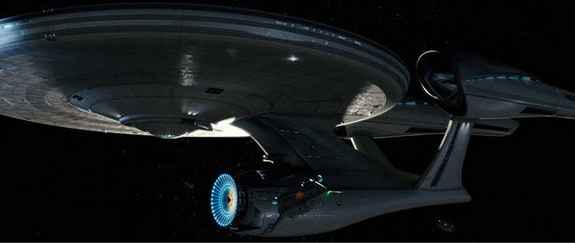Inspired By Star Trek: Fusion Impulse Engine In The Works

Star Trek was indisputably ahead of its time. Not more than a week goes by where we’re not talking about some other push in research destined to bring us new technology on par with the popular science-fiction show. We’ve already seen the X Prize Foundation offer up a $10 million reward to the inventor of a medical ‘tricorder’, marvelled at the feasibility of ‘warp drive’, and revelled in the hope the USS Enterprise may one day be reproduced. Now, aerospace engineers are busy at work in making fusion impulse rocket engines a reality.
The research is being carried out by a team of scientists and researchers brought together at the University of Alabama-Hunstville; including those from UAHuntsville’s Department of Mechanical and Aerospace Engineering, Boeing and Marshall Space Flight Center’s Propulsion Engineering Lab. With an ultimate goal to develop a nuclear fusion impulse engine by 2030 – a point in time where Earth will be the closest to Mars, at 51.4 million miles apart – the first goal is to reach what the scientists’ call a “Holy Grail” of energy propulsion technology, to achieve scientific ‘break-even’. And that means the point at which the energy derived from the pulse system equals or exceeds the energy being put into it. Just last week, Sandia National Laboratories said new research showed they were on the way to reaching the break-even tipping point, and now considered it a “short-term goal”.
The science behind the fusion process is mind-boggling. Ross Cortez, an aerospace engineering PhD candidate, says himself; “Imagine using a 1-ton TNT equivalent explosive and putting it out the back end of a rocket. That's what we're doing here.” Using what is known as the Z-pinch effect, Cortez explains the technique uses a cylindrical array of super-thin lithium wires, where a huge electrical current is  passed through them. The massive jolt of energy – millions of amps are sent through the wires in 100 nanosecond pulses – causes the wire to vaporise into plasma, where it later collapses into the familiar Z-pinch.
passed through them. The massive jolt of energy – millions of amps are sent through the wires in 100 nanosecond pulses – causes the wire to vaporise into plasma, where it later collapses into the familiar Z-pinch.
The University of Alabama in Hunstville describes the effect in its piece on the research as “the compression derived from the plasma’s own magnetic fields”, citing UAHuntsville engineering professor and project head Dr Jason Cassibry in saying the Z-pinch is “equivalent to 20 percent of the world’s power output in a tiny bolt of lightning no bigger than your finger.” Mind-boggling. Still, Cortez says the kind of speeds we could theoretically look forward to are close to or exceeding 62,600mph.
Like our look at the possibility of ‘warp drive’ one day injecting new life into deep space exploration, if the project to build a fusion impulse rocket engine is successful, it could mean the fuel payload on-board spacecraft would be significantly reduced from thousands of tons to just a few tons and, more importantly, slash the time it takes to get to the outer reaches of our solar system. And that's where trips to distant planets become a whole lot more feasible - a trip to Mars could take as little as six weeks instead of six months – and thus, further removing such health concerns as bone density loss and other medical issues associated with weightlessness in space.
But understandably, there's still a long, long way to go. First up is figuring out how to harness the energy produced to create thrust, and that's long before you even contemplate assembly – which so happens has to take place in the vacuum of space, a la the ISS.
Richard Birkett
Source: UAHuntsville